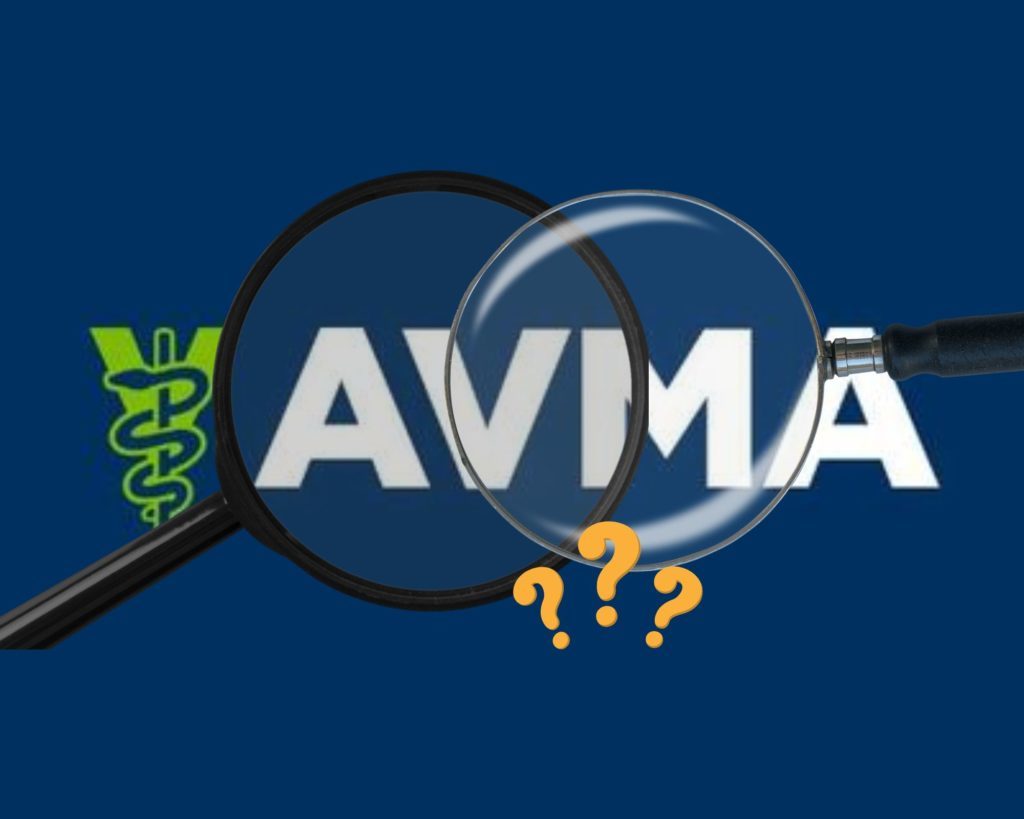Vet Industry Leaders Fault AVMA for Reticence on Key Issues
Burnout has become a subject du jour of many industries, where employees, especially after the COVID-19 pandemic, feel distress and alienation from a sense of purpose, when more is always expected while getting by with less.
But veterinary professionals experience more stress and anxiety than the general population. For example, they are 2.4 to 3 times more likely to die by suicide than the general population in the United States.
On March 13, 2023, 33-year-old equine veterinarian Dr. Kathleen Lennon died by suicide, sending shockwaves across the profession. An announcement issued by Perdue University, from which she obtained her veterinary degree in 2015, said in part:
“Dr. Lennon is remembered for her dedication and relentless pursuit of the best treatments for her patients. Always diplomatic and kind-hearted in her approach, she was known for giving the same effort in caring for a ‘backyard’ horse as she would in treating a prize-winning champion. With a phone that never was silenced, Dr. Lennon constantly responded to middle-of-the-night calls to treat horses in need of veterinary care. As the demand for her expertise and medical care grew, days off were few and far between….The story of Dr. Lennon’s life explains why news of her death came as such a wrenching shock. She was loved and esteemed for all the admirable qualities that are stunningly antithetical to her fate…Though Dr. Lennon experienced the love of others, that caring ultimately was outweighed by internal stresses that remained private as she stoically bore the burdens of others.”
An amalgamation of hardships within the veterinary profession — staffing shortages, mounting student debt, and a mental health crisis, including that alarming rate of death by suicide — are the reality of the industry, and a cause of great concern for its advocates, practitioners, and thought leaders.
AVMA Accountability
The AVMA (American Veterinary Medical Association), the veterinary industry’s main trade association, would appear to be the most appropriate entity to look to for answers – indeed, to hold accountable – for the state of affairs. Yet, on many of these issues, neither the organization nor its leaders will take positions, choosing to remain opaque at best while the multi-faceted crisis continues.
“They are not doing enough…”
The efficacy and willingness of the AVMA to make substantial change for one of the most pressing problems the profession currently faces is one of the reasons Dr. Robert Murtaugh, DVM, is running for President-elect of the AVMA.
[The AVMA is] not doing enough in terms of the workforce shortage situation, and I think that is the biggest driver when it comes to burnout and other concerns we are facing in the profession,” he told TCR in a phone interview.
The AVMA’s leaders, including current President-elect Dr. Lori Teller, declined detailed email requests seeking comment for this story. After several attempts to contact chief veterinary officer Dr. Gail Golab, Dr. Teller, and others, the AVMA’s assistant director of media relations Mark Rosati said they were “unavailable” for interviews. In an emailed statement to TCR, Rosati said the trade group “has and continues to invest substantially in research aimed at helping to address these challenges into the future.”
Shortage To Worsen Before Improving?
Murtaugh noted that U.S. medical schools graduate 28,000 physicians a year, but only around 3,000 veterinarians. Yet, within the next seven to ten years, 15,000 to 20,000 vets out of approximately 78,000 employed vets are going to reach age 65 or greater, retiring out of the profession. According to the U.S. Bureau of Labor Statistics, employment of vets will grow almost 20 percent in the next eight years. But it is difficult to imagine who all those new vets will be.
 The AVMA leadership has yet to recognize that we have a workforce shortage.”
The AVMA leadership has yet to recognize that we have a workforce shortage.”
“We are behind the curve in regard to having enough veterinarians to meet the demand,” Murtaugh said. “And the COVID pandemic brought out things that were already smoldering, and made it readily apparent to most people… The AVMA leadership has yet to recognize that we have a workforce shortage. They dance around that terminology.”
Part of the AVMA’s irresoluteness, said Murtaugh, is how the organization is structured and makes decisions.
“It’s always been a leadership that has been single-practice focused, not looking at the needs more broadly, in general.” he said. “And it’s always been a sort of ‘what if?’ culture, like ‘what if we graduate more vets and the demand is not there?’ Veterinarians in general often have a scarcity mindset, I think that’s where it comes from. It’s a tradition that is still the status quo.”
Murtaugh is not confident he will be elected in July, when the organization’s candidates gather in Denver for the election. His platform includes introducing telemedicine into the profession and championing more “mid-level staff support” — the equivalent of a nurse practitioner. For the election, a 70-person body within the AVMA called the House of Delegates, which includes a representative from each state, and 20 other individuals representing veterinary organizations, meets to vote for its over 100,000 membership.
Veterinary professionals pay fees ranging from $185 for recent graduates to $370 in membership dues. Half of the AVMA’s revenue goes to salaries, including six-figure compensation to AVMA leadership.
Non-compete Employment Contract Clauses: Vet Wellness Barrier?
For some veterinary advocates, it’s not just about the staffing shortages, but what is expected of vets once they have the job.
An easy way to boost morale and give practitioners a greater sense of autonomy is to remove non-compete clauses within veterinary employment contracts, says Paul Diaz, the founder of Hire Power Consulting, which works with companies and individuals to recruit and retain talent.
Diaz has been outspoken against non-competes for veterinarians, and can often be found taunting leaders of corporate veterinary hospital networks such as VCA on LinkedIn.
“VCA Animal Hospitals How exactly can a veterinarian ‘follow their calling, grow their career and lead the industry’ while being restricted by a non-compete?” Mr. Diaz wrote on LinkedIn earlier this year.
“My goal is to empower and educate veterinarians to not sign them,” Diaz said in a phone interview with TCR. “It’s just plain fact that hospitals and employers cannot survive without the veterinarian, and veterinarians, it is my impression, that they don’t understand how much power they wield in this industry. They can make this industry what they want it to be, with just a little organization.”
Non-competes are essentially banned or not enforced in California, North Dakota and Oklahoma, and are limited to high-wage earners (which include vets) in nine other states. Diaz estimates 75 to 80 percent of current veterinary contracts include non-compete language, even as the Federal Trade Commission is considering banning the clauses outright–for all professions in every state.
Diaz also argues that consolidators and large corporate hospitals, such as Blue Pearl, use non-compete clauses to buy up the competition by first luring vets away from community clinics with higher pay and bonuses and then making them sign non-competes, leaving independent vet practices without the talent and resources to continue. Not all vets thrive in corporate culture, he says, and many who may want to quit feel trapped.
“It not only has career related impacts, it impacts people’s personal lives,” he said.
Diaz, like Dr. Murtaugh, is also critical of the AVMA, and said the organization chooses not to take a position on non-competes.
“The American Medical Association came out against non-competes, and the AVMA could have followed suit, but they didn’t.” he said. “The American Bar Association did the same thing for lawyers, and the AVMA again remained silent. It’s almost as if they just want to ignore it and that will make it go away.”
In fact, the topic of the AVMA’s reticence on key policy issues took center stage last September at an elite industry conference which TCR attended.
“Protectionist Behavior”
In late September of 2022, the NAVC (North American Veterinary Community), the organization behind the industry’s largest annual conference, VMX (Veterinary Meeting & Expo) held in Orlando in January, hosted the sixth annual Veterinary Innovation Summit in Portland, Oregon. An intimate gathering of veterinary industry titans, decision makers, and thought leaders, among those in attendance was the AVMA’s chief veterinary officer, Dr. Gail Golab.
During a Q&A portion of a CEO & CMO Panel which Dr. Golab attended – “Delivering More Effective Care: Using Innovation to Deliver More Effective Care, Professional Wellbeing & Meet Pet Owner Demand” – TCR asked the panel to comment on whether they regard the AVMA as effective and how they perceived the AVMA’s role in policy initiatives. Earlier in the discussion, several panelists had expressed frustration with respect to telemedicine and its lack of legislative progress relative to telemedicine in human healthcare.
“I think the AVMA has a very important role to play,” vet telemedicine company Vetster medical director Dr. Sarah Machell, BSc, DVM told the conference. “From what I can see, sitting up on top of the United States , they have a lot of clout. They have over a hundred thousand members.
She added:
There’s a lot of protectionist behavior that’s still happening at that level. And, there’s a lot of fear of losing a piece of the pie. It’s a bit challenging to answer what their role is.”
Supporting Vets in Crisis
The mental health toll on veterinarians cannot be ignored, said Bri Golob, director of programs for NOMV (Not One More Vet) an advocacy and resource group for veterinary professionals in crisis.
“We don’t think there is one thing that can explain away everything that is going on in the industry,” Ms. Golob said in an interview by phone. “And everything is individualized.”
A 2015 study found that veterinarians are twice as likely to die by suicide than those in the medical profession and four times more likely than the general population. And a 2018 study shows an increased rate of death by suicide amongst female practitioners in the last thirty years.
It’s reached a tipping point. We were coping, and now we are not.”
Filling a community gap, grassroots organizations such as NOMV are making headway in reaching out to veterinarians and those close to them who may be affected by mental health decline and working with educators and therapists to holistically address some of the root causes of vet burnout.
Financial stress is a key player, said NOMV’s Golob. She pointed to the costs of setting up an independent vet practice that includes much of the same technology and equipment as human medical offices, but doesn’t make the same revenue as its human counterpart, all while juggling hundreds of thousands of dollars in student debt.
“The financial burden of this means vets aren’t set up for success, and the process can be difficult to navigate,” she explained.
There is also what’s referred to as “moral distress” resulting from veterinarians being asked to euthanize pets frequently in many cases. In a January 2022 New York Daily News opinion piece, a veterinarian underscored a study showing that pentobarbital (used by veterinarians to perform euthanasia) poisoning is often determined to be the means for suicide within the veterinary population. “I am always struck by the utter hostility of subverting one of our clinical tools to our own self-destruction,” Dr. Mani wrote.
Awareness is the first step, if many vets aren’t already living with some of these issues, and education and support are important parts of the path to finding tangible and long-term solutions. For most, those solutions cannot come fast enough.
“It’s reached a tipping point,” said Murtaugh. “We were coping, and now we are not.”
If you or someone you know is in crisis, call or text 988 for the Suicide and Crisis Lifeline, or contact the Crisis Text Line by texting TALK to 741741

